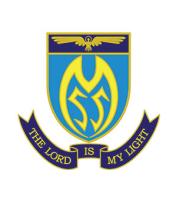| Language Policy |
While English has always been the medium of instruction, we provide the learning environment and exposure necessary for the mastery of English, Chinese and Putonghua. Ample opportunities are provided for students to enhance linguistic and communication skills through the formal and informal curricula. |
| Learning and Teaching Strategies |
Our well qualified teachers work assiduously towards refining teaching strategies to cater for learner diversity. Learning outcomes are enhanced through interactive teaching and learning, project learning, IT, knowledge forum and peer lesson observations. |
| School-based curriculum |
1. Electives: 2X and 3X. The Block System in S4-S6 facilitates a flexible combinations of subjects from both the Arts and Science streams. Students may take up to 3 Elective subjects.<br> 2. Curriculum highlights: In S.1 & S.2, a Modular System helps students concentrate on the subjects they are taking each term so that they can achieve better results. Project learning, STEM across the curriculum, S.1 JUMP and S.2 LEAD, are offered to challenge students' critical thinking and creativity. English Literature, Religious Education, Computer Literacy, Technology & Living and Visual Arts are offered in the junior levels. In S4, a specially-designed GROW! programme in which students work collaborating with various NGOs in Hong Kong in service learning projects. In addition, the English Panel participates in a Collaborative Research and Development (“SEED”) Project titled 'Developing Students' Creativity, Collaboration and Problem Solving Skills through Creating the Makerspace in the Secondary English Language Classroom. |
| Approach to Catering for Learner Diversity |
1. Streaming and small class teaching cater for learner diversity in English, Chinese and Mathematics in S.1 and S.2. 2. To stretch the potential of students, the school provides them training in speech, debate, drama, art, music, dance, athletics and swimming. 3. In addition, students are encouraged to participate in inter-school and international competitions, enhancement programmes for the exceptionally gifted and leadership training camp outside school. 4. NCS students are offered a special Chinese as Second Language Curriculum. 5. Student diversity is further taken care of by teachers who make referral to the Special Educational Needs Support Team through an Early Identification System. 6. The EDB School-based Educational Psychology Service has been in place since September 2012. |
| Approach to Integrated Education |
1. A Special Educational Needs Support Team (SENGT) comprising the Principal, Vice Principal (Pastoral Care), Head of Guidance Team and the School Social Worker caters for the needs of SEN students. <br>2. A SEN Teaching Assistant provides support for SEN students. <br>3. An Early Identification Mechanism is set up. <br>4. Observation Reports of SEN students’ learning in classroom, emotion and behavior are prepared twice a year. <br>5. SEN Conferences for discussing SEN students’ progress are held twice a year. <br>6. Individual Educational Plan (IEP) are offered to SEN students. <br>7. The following strategies and support for teaching, learning and assessment are adopted. (a) Make flexible seating arrangements; (b) Provide appropriate learning materials/ aids; (c) Give appropriate instructions or exemplars; (d) Revise part of the content of learning tasks; (e) In project learning or group work, help other classmates understand the needs of students with SEN; (f) Deviate the content of the summative assessment; (g) Make flexible/ special assessment arrangement (e.g. time, layout of paper, instructions); (h) Allow extra time to finish learning / assessment tasks; (i) Provide remedial teaching and train up students’ test-taking skills; (j) Conduct after-school supports to SEN students. <br>8. Executive function groups, speech therapy and language enhancement groups are orgainsed for SEN students. <br>9. Visits/service projects are organised to SEN students. 10.Conduct relevant SEN workshops for teachers. 11.Close communication with parents to discuss students' learning and emotional progress. |
| Education Support for Non-Chinese Speaking (NCS) Students |
|
| Home-School Co-operation |
Established since 1998, the PTA continues to play a vital role in enhancing communication and understanding between parents and the school, promoting values education for parents, enhancing parents' and students' sense of belonging to the school as well as generously contributing towards the general welfare of students. |
| School Ethos |
1. The formal and informal curricula provide students with an all-round education.<br>2. The six MSS core values namely Reverence, Gratitude, Compassion, Integrity, Perseverance & Wisdom, are instilled in students through a whole-school approach. <br>3. Pastoral care programmes such as those of civic and moral education enable students to develop confidence, a sense of responsibility, independent thinking as well as respect for themselves and others.<br>4. Students in the senior levels are provided the opportunity for leadership training through organizing Student Council functions and extra-curricular activities.<br>5. The liberal atmosphere in the school is also conducive to training students to exercise self-discipline. |
| School Development Plan |
Together We Grow & Glow<br>Major Concern 1:To enhance students' well-being through building a greater sense of purpose in life.<br>Major Concern 2:To cultivate students' ownership for them to be future-ready learners. |
| Teacher Professional Training and Development |
1. To keep abreast of educational reforms.<br>2. The Staff Development and Appraisal Committee organize 3 Staff Development Programmes each year.<br>3. Teachers are encouraged to participate actively in staff development programmes through which teaching strategies are consolidated and refined. |
| Life-wide Learning |
1. To cater for diversified interests and developmental needs, there are over 50 extra-curricular clubs and groups, nearly 20 of which are groups that offer service to the community.<br>2. To discover and develop talents, students are encouraged to pursue for excellence by taking part in various competitions such as those of music, dance, speech and drama etc.<br>3. To extend and enrich students' learning experience, co-curricular activities complementing most of the academic subjects have been organized. The activities range from the English Festival to inter-class Chinese choral competitions, appreciation of music, film and drama, visits to science and cultural museums, critical thinking skills workshops as well as various kinds of sports and ball games. |
